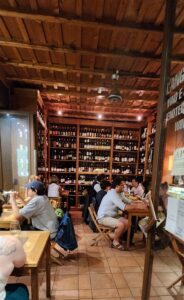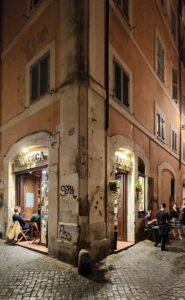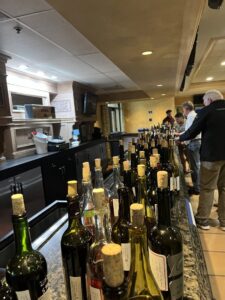There’s something wonderful about tasting wine in sight of the vineyards where the grapes were grown. But it can also be a lot of fun to visit tasting rooms in a city or town, near the countryside. No city that we have ever visited has more opportunities for urban wine tasting than Santa Barbara. The official count is 25 tasting rooms, primarily in three districts.
Power Tasting has reviewed several wineries’ tasting rooms in Santa Barbara in the past. The fact is that what we wrote previously has in some instances become inaccurate. There are new wineries represented, existing ones have disappeared and others have relocated, creating new wine tasting experiences.
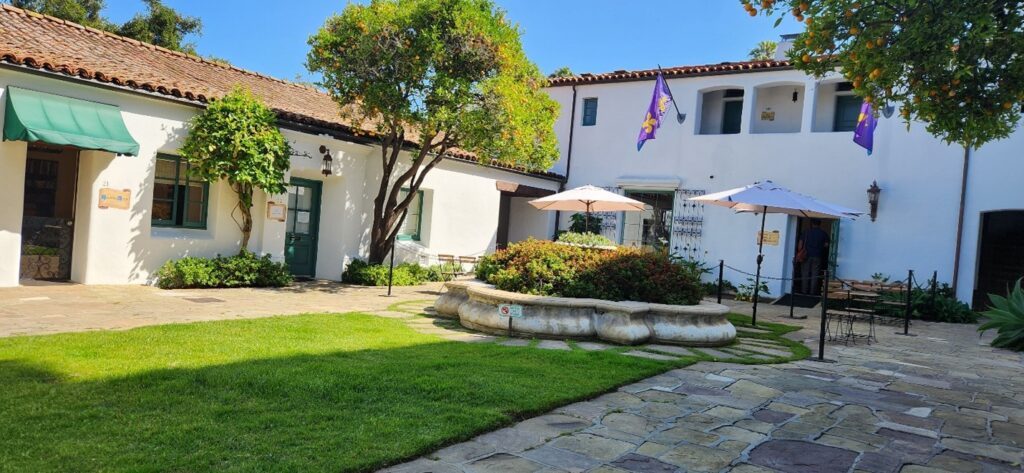
The courtyard of El Paseo, with the Grassini Family Vineyards tasting room under the flags. There are four other tasting rooms scattered around the courtyard.
To the best of our knowledge, there are no vineyards within the city limits of Santa Barbara. But there are many of them in Santa Barbara County, with a good cross-section represented in town. Moreover, there are other winemaking regions within the southern end of California’s Central Coast, including Santa Ynez and Santa Maria Counties, available for tasting in Santa Barbara. (There are a lot of saints in California.) Wines from all those regions can be tasted in the city’s tasting rooms.
We used to associate Santa Barbara with Burgundy-style wines, i.e., Pinot Noir and Chardonnay. While this is still true, the broad Southern California region has many microclimates and terroirs that support Bordeaux and Rhône-style grapes as well. This makes a wine tasting visit to Santa Barbara a more varied experience than in the past.
There are three districts within the city where the tasting rooms are concentrated and each presents its own personality. Uptown, where the better stores line State Street, there are ten of them. The Sanford Winery has moved out and now offers tastings at their vineyards. It has been replaced by a husband-and-wife team of Barbieri and Kempe, each with their own tasting lists in the former Sanford facility, located in a classy shopping mall. There are five tasting rooms in a passage called El Paseo, the best-known of which is Au Bon Climat, where you can get your Pinot Noir/Chardonnay kicks. Finally, Kunin Wines, which used to be in the Funk Zone is now on the outskirts of the uptown tasting area.
Easy tasting at Paradise Springs Winery, in the Funk Zone.
In the so-called Funk Zone, the ten tasting rooms are not as classy (with some notable exceptions, like Margerum, which is reviewed in this issue). That is not to say that the wines available to taste are inferior; we were quite impressed with some of them. If you do go there, try to do so between Monday and Thursday, if your intent is some serious wine tasting. On the other hand, if you want to party hard, the weekend is for you.
Finally, on Santa Barbara’s east side, an area of light industry, there are five tasting rooms. They’re rather spread out, so going by car from one to the other is called for. To our surprise, there was some quite creditable wine being pressed and aged there, for instance at Jaffurs Wine Cellars. Wine tasting in this sector is a different experience than we have ever had elsewhere. Wine is wine; you just need to be prepared for the factory atmosphere you’ll find there. We weren’t, but will be the next time.

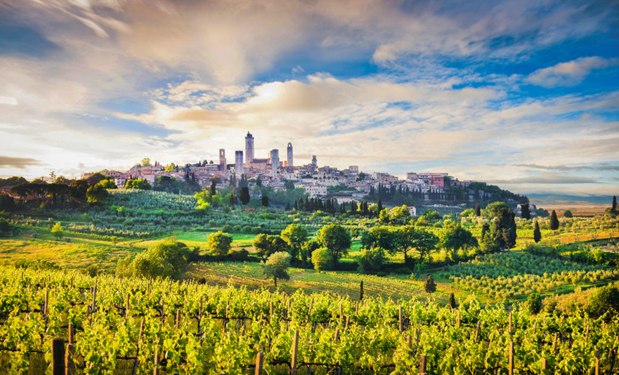
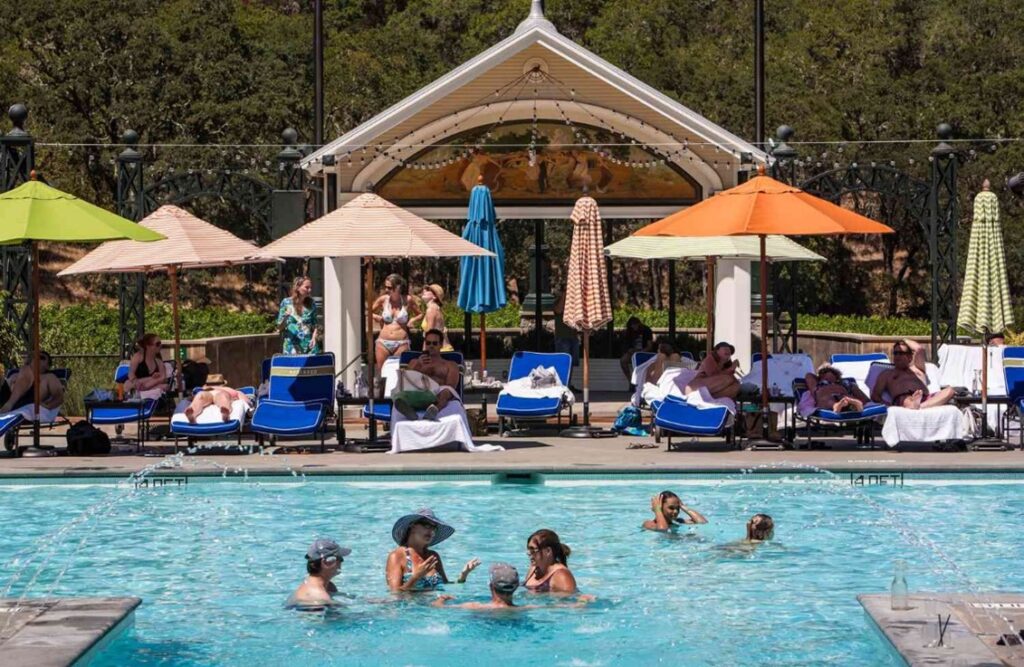
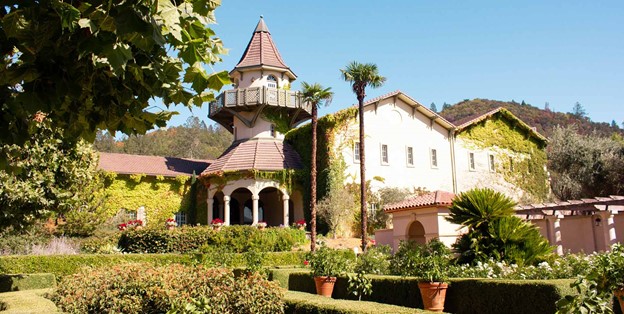
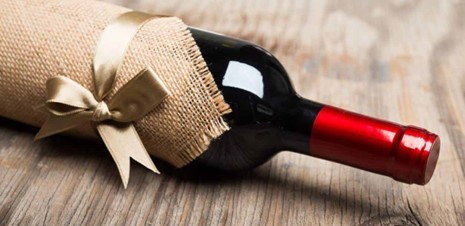
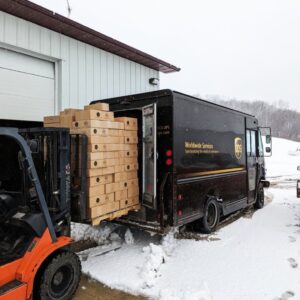

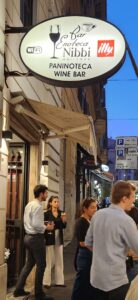

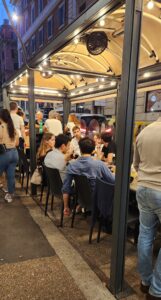 ething going on. We’ve seen large parties, with bottles and platters seeming to arrive every ten minutes. There was a fellow on his PC writing what must have been the Great Italian Novel, made up of equal parts of inspiration, wine and cigarettes. And there was a woman enjoying a glass of wine by herself without getting hassled (try that in New York!).
ething going on. We’ve seen large parties, with bottles and platters seeming to arrive every ten minutes. There was a fellow on his PC writing what must have been the Great Italian Novel, made up of equal parts of inspiration, wine and cigarettes. And there was a woman enjoying a glass of wine by herself without getting hassled (try that in New York!).
